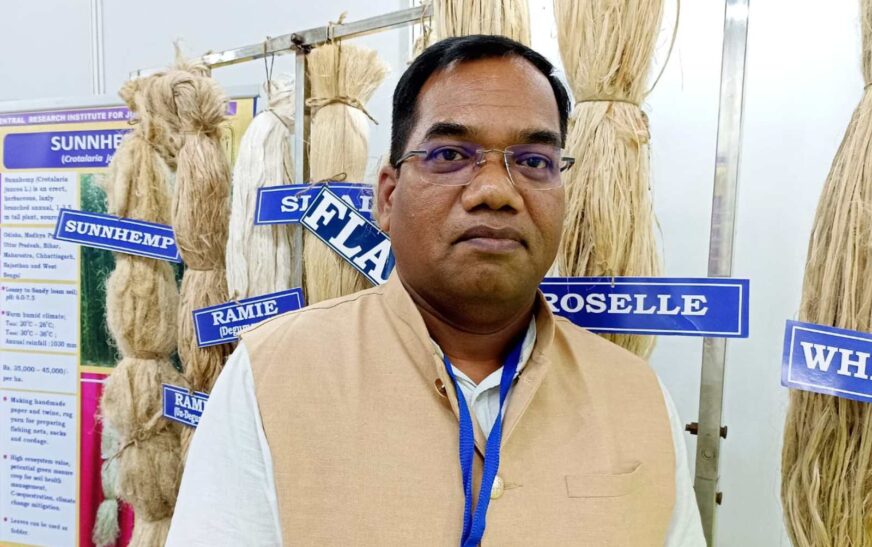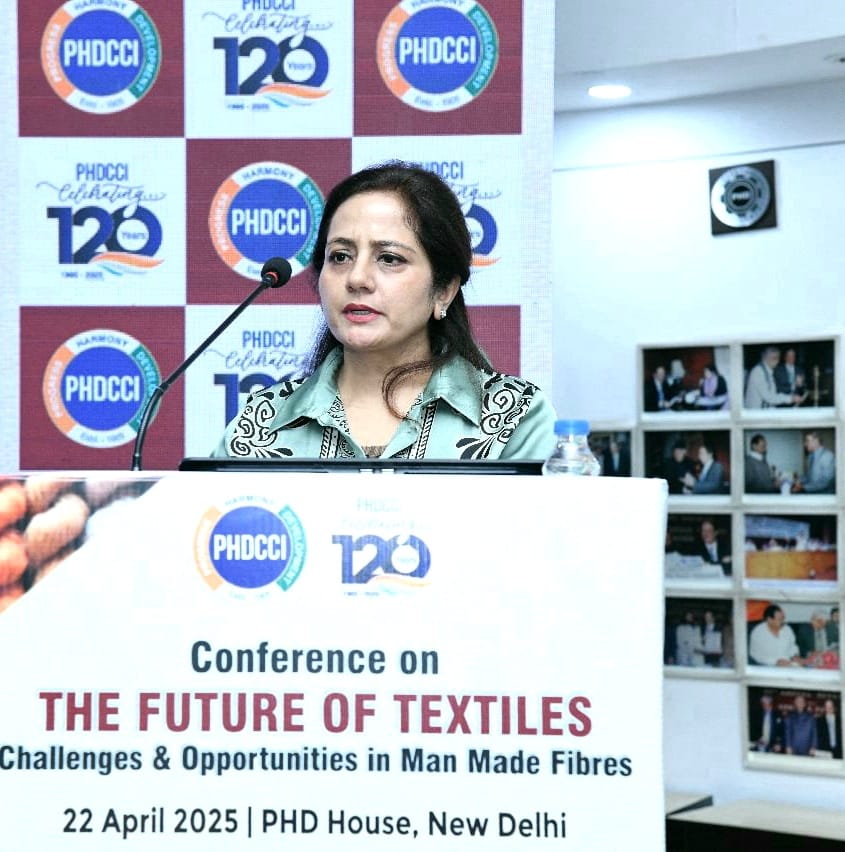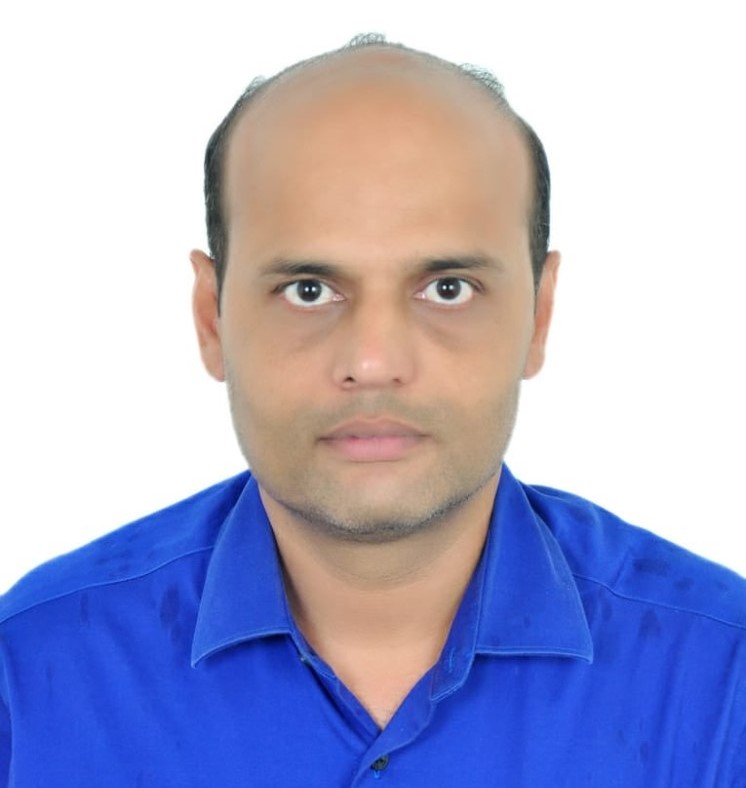ICAR – Central Research Institute for Jute & Allied Fibres (ICAR-CRIJAF) spearheads agricultural research and innovation for jute and allied fibre crops in India. Since its establishment in 1953 under the Indian Council of Agricultural Research, ICAR-CRIJAF, headquartered in Barrackpore, West Bengal, has played a critical role in advancing technologies and practices that enhance productivity, profitability, and sustainability across the jute and allied fibre sectors.
The institute takes a holistic approach to the entire value chain of jute production. It specializes in breeding high-yield, disease-resistant crop varieties and developing innovative, eco-friendly retting technologies, which are vital for fibre extraction. ICAR-CRIJAF’s research portfolio spans crop improvement, agronomy, plant protection, fibre quality enhancement, and the creation of value-added products, all tailored to meet the changing needs of farmers and the jute industry. Its work not only improves the quality of jute but also provides sustainable solutions to reduce environmental impacts.
As a key driver of India’s green revolution in natural fibres, ICAR-CRIJAF is firmly committed to promoting sustainable agriculture and addressing climate change. The institute fosters collaborations with national and international organizations to facilitate knowledge exchange, capacity building, and the implementation of best practices. These partnerships reinforce India’s position as a global leader in producing natural fibres. ICAR-CRIJAF’s initiatives are designed to empower farmers, promote rural development, and contribute significantly to the nation’s economic growth.
In an exclusive conversation with The Interview World, Dr. R.K. Naik, Principal Scientist of Farm Machinery & Power at ICAR-CRIJAF, shares insights into the institute’s key initiatives and innovative products. He highlights how farmers can leverage these advancements to add value to raw fibres, boosting their income and promoting sustainable farming. This interview sheds light on the cutting-edge research and development at ICAR-CRIJAF and its impact on India’s jute industry. Here are the key takeaways from this enlightening discussion.
Q: Could you provide an overview of the key initiatives and activities of the Central Research Institute for Jute & Allied Fibres, particularly focusing on the innovative products being developed for various sectors, including textiles and others?
A: The Central Research Institute for Jute & Allied Fibres is dedicated to developing high-yielding varieties of jute and allied fibre crops. It aims to provide farmers with comprehensive cultivation packages and efficient fibre extraction processes. This support enables farmers to benefit significantly from cultivating these long fibre crops. While most of these fibres, such as jute, are bast fibres, sisal stands out as a leaf fibre.
These fibres are not only biodegradable and environmentally friendly, but they also offer farmers a substantial income. By further enhancing their value through processing and product development, farmers can secure even higher prices, creating additional economic opportunities.
Q: What unique value can be created by farmers for enhancing or innovating upon raw fibres?
A: Value addition involves converting raw fibres into high-value products. By acquiring jute fabrics from mills, businesses can produce a range of bags. Moreover, raw fibres are versatile and can be used to create various handicrafts, statues, and roofing materials. These upgraded products command higher prices in the market, thereby maximizing revenue and enhancing overall profitability.
Q: How are these fibres currently being utilized in the textile industry?
A: Beyond Remie and Flax, a variety of textile fibres play crucial roles in various industries. Flax, often referred to as linen fibre, is renowned for its durability and versatility. Remie, a fibre similar to white cotton, is valued for its softness and comfort. In the cottage industry, fibres such as jute and Mesta are essential. Jute is extensively used to produce durable bags, while Mesta complements the jute industry with its own unique applications. Sisal, another important fibre, is primarily used in the cottage industry for crafting roofs, mats, brushes, and composite materials, highlighting its broad utility.
Q: What are the latest innovations and products being developed at your institute, and how do they align with your strategic goals?
A: Our team has made significant strides in developing advanced jute varieties that offer superior resistance to a range of diseases and both biotic and abiotic stresses. These newly engineered varieties also address the issue of early flowering, a common problem exacerbated by unpredictable weather patterns. For instance, the JRO BA3 variety is designed to thrive even with early sowing, providing robust plant protection and contributing to more stable yields for farmers.
In addition to our crop improvements, our scientists have rigorously tested and formulated a variety of chemicals aimed at managing diseases and pests effectively. These chemicals are part of our comprehensive approach to crop management and are being actively promoted to enhance agricultural productivity.
One of the critical challenges faced by farmers is the retting process, a crucial step in jute processing that has become increasingly difficult due to climate change and water shortages. To address this, we have developed an innovative microbial powder formulation that significantly accelerates the retting process. Traditionally, retting takes approximately 25 days, but with our microbial powder, the process can be completed in just 10 to 12 days, thereby improving efficiency and reducing water usage.
Moreover, we have designed and introduced a range of machinery to support various stages of jute cultivation and processing. This includes equipment for sowing, weeding, plant protection, harvesting, and fibre extraction. These technological advancements have gained popularity among farmers, who are reporting notable benefits in terms of productivity and operational efficiency. By integrating these solutions, we are helping farmers adapt to changing environmental conditions and enhance their overall farming practices.
Q: What is India’s current position in the global jute export market?
A: India leads the world in jute production, accounting for a substantial share of global output. Remarkably, about 85% of this jute is consumed domestically. In contrast, only 15% is exported. However, the export of jute products, rather than raw jute fibres, has surged over the past decade. This growth in jute product exports highlights the increasing global demand and the significant value added to Indian jute through processing.








